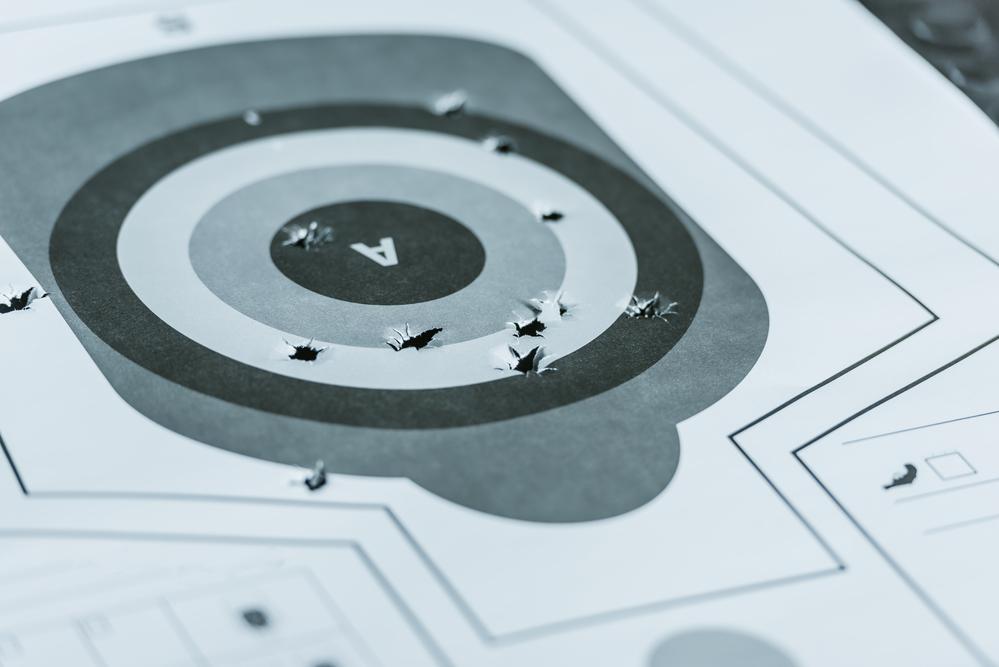
UPDATE: Please disregard this article. It was written a long time ago and does not represent our views on mouse sensitivity .....
What is the Best Sensitivity for Aiming?
What mouse sensitivity should you use for the best aiming performance? It is a common question and one that is poorly addressed by the internet. The answer is always ‘it depends’ or ‘it comes down personal preference’. The reason for these kinds of answers is that people are successful with a wide range of sensitivities. The are many factors that make for good aim and mouse sensitivity is just one of them.
I get that but please just tell me what the best sensitivity is.
Ok. I will. At Aiming.Pro we have access to statistical data to answer that question. We can cross-reference aiming performance with sensitivity settings and identify which sensitivities most highly correlates with good aim. And the answer is:
28 - 43cm (11 - 17 inches) per 360o
That is, your sensitivity should be set so that it takes something between a 28 and 43cm movement of your mouse to do a full 360o turn.
That’s quite a range?
Yes, but there isn’t a significant variance in aiming performance within this range. So, if your sensitivity is within this range then something else is likely causing your poor aiming performance (most likely you just need to aim practice more ?).
Which end of the range should I choose?
Higher sensitivity (i.e. something closer to 28 cm per 360o ) favours fast-paced games that require quick turns and have action all over the screen e.g. Overwatch or Paladins.
Lower sensitivity (i.e. something closer to 43 cm per 360o ) favours slower games where precision is key e.g. Counter Strike
Should I change my mouse sensitivity?
The most damaging thing you can do to your aim is to change your sensitivity. You have developed many hours of muscle memory based on your current sensitivity and changing it can cause all kinds of harm.
Muscles memories are slow to fade (just like you never ‘forget’ how to ride a bike) and changing your sensitivity will add new ones in addition to your old ones. That is, your brain will have developed multiple ways for, say, moving your mouse to hit a target 5cm to your left on the screen. That is not a good thing. You can’t be sure which of these learned movements your brain will use. These kinds of issues may be hard to notice when it comes to mouse aiming but are more obvious in technical sports such as golf or tennis. Your bad old habits are slow to fade and you will often find scratching your head about where that terrible volley came from.
So if your sensitivity is in the range above then I would say to just leave it alone. If you are fairly new to FPS games or your current sensitivity is outside of this range then you might consider a one time only change. But be fully aware that it will take a good amount of practice to return to your peak ability.
Needless to say, if you play multiple games, it is essential that you match your sensitivity between games. You can use a site like mouse-sensitivty.com to help you do this. Aiming.Pro offers sensitivity matching between games on the mouse sensitivity convertor.
How can I improve my aim once I have changed my sensitivity?
Practice! It will take a good amount of practice to form your new muscles memories. Also, note that the neurological processes that build and strengthen new muscle memories happen mostly overnight whilst you’re sleeping. So don’t expect to see much of the benefit of practice until at least the next day.
Fortunately, we have the perfect resource for you to help you out with this. Aiming.Pro offers a fully optimized aim training program to help you improve your aiming accuracy and speed and track your progress along the way!